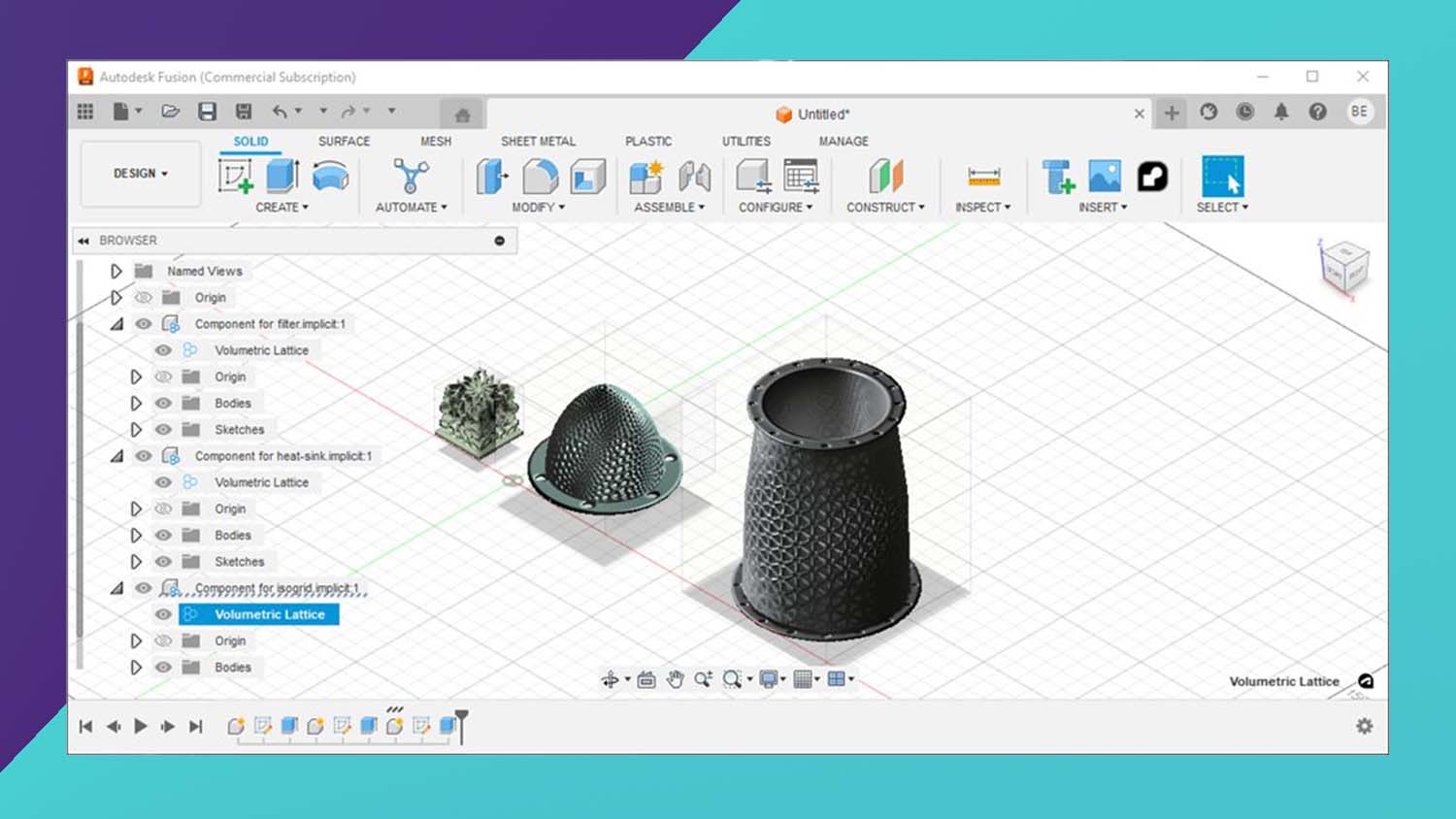Fusion 360 adds nTop import for implicit modelling
Autodesk has announced that Fusion users will be soon be able to take advantage of nTop’s implicit modelling capabilities to enhance their models for lightweighting, improved thermal management, and the creation of complex architected materials.
File sizes will reportedly be reduced from gigabytes down to megabytes.
This feature allows users to import implicit designs directly into Fusion without having to mesh them. By avoiding the meshing procedure, nTop Users can export their implicit design and quickly import it directly into Fusion.

Once into Fusion, its array of build preparation capabilities tailored for 3D printing – including part orientation, packing, support generation, slicing, machine-specific build file generation, and machine connectivity – can enhance the efficiency of the additive manufacturing processes.
Beyond additive manufacturing, Fusion’s CAM features allow users to manufacture nTop-designed parts using CNC machining, providing an extensive toolkit.
The integration’s implicit import functionality is not limited to manufacturing preparation, but also offers a bridge into Fusion’s process simulation toolset. Autodesk says that this will allow nTop users to access Fusion’s metal powder bed fusion process simulation capabilities to predict potential build failures and create compensated models.
“Many of our mutual customers are interested in how to include complex implicit designs in the digital thread, and nTop and Autodesk have joined forces to address this challenge collaboratively,” said Sualp Ozel, a senior product manager at Autodesk. “Through direct implicit data transfer, implicit designs can exist within CAD assemblies, making it possible to manage design data throughout the entire process.”
Autodesk will integrate nTop into Fusion in early 2024. However, the company will demonstrate this workflow at Formnext, a conference in Frankfurt from 7-10 November, 2023.
Autodesk has also taken advantage of implicit modelling in Autodesk Fusion, with the addition of volumetric lattice capability included with the Product Design Extension. This toolkit allows users to modify existing solid bodies or meshes in order to create volumetric lattices which alter the appearance and shape of a design.
Autodesk Fusion Celebrates 10 Years with New Updates